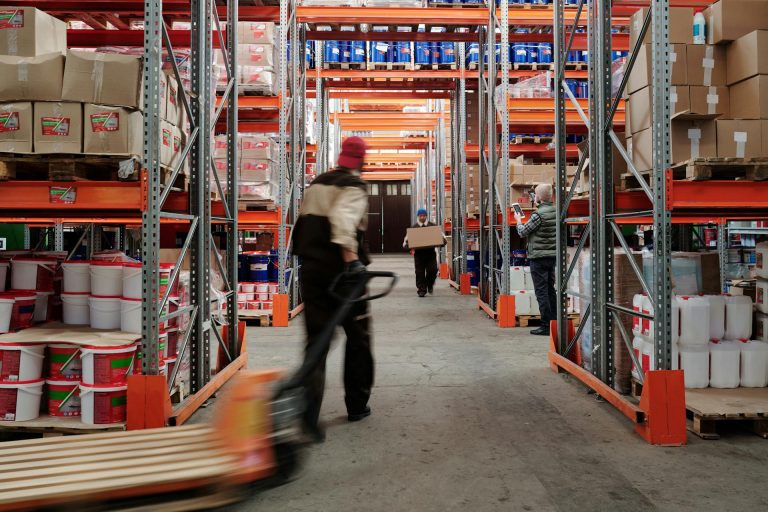No matter the type of inventory-based business you work in, your warehouse is the structural “bones” of your operation, from organization, providing storage, serving as material handling, and distribution of goods. Given their significance, warehouses and their (mis)use can eat away at your revenue or even result in significant losses, sometimes without clear indicators.
We’re going to examine common areas where warehouses lose money, how to identify these areas, and strategies that you can begin starting today to optimize warehouse operations.
Most Common Areas Warehouses Lose Money:
Inventory Management:
Inventory management looks different for each company depending on size, industry, and needs, but the basic requirements of accounting for receiving, storing, using, and shipping goods is the crux of the warehouse itself.
Businesses often start with little to no inventory experience and grow into a process that fits the needs for the business early on, but your operation’s current needs require more than the home grown solutions that once worked.
Poor inventory management can lead to overstocking, understocking, or misplacing inventory altogether, creating lost sales, increased carrying costs, expired goods, and unaccounted items.
Space Utilization:
From starting in the garage to full commercial warehouse units, a common sentiment in business is that you “just need more space”, for more items, more equipment, or more workers.
Use of warehouse space is another area that many businesses organically grow into, without fully optimizing its usage, creating optimal routes for storage and picking, or integrating technology to reduce time spent moving between the warehouse floor and offices.
Poor space utilization can result in wasted space, overcrowding, or inefficient workflows. This can lead to reduced productivity, increased operational costs, and potential safety hazards.
Labor Costs:
Labor costs account for a significant portion of warehouse expenses, but these “costs” (employees) are often the greatest untapped portion of your business to grow, change, and bring long-term value.
Employees and contractors can only excel in the space and processes they are given, and as businesses grow or look to improve existing roles and responsibilities, proper inventory training, tools, and warehouse optimizations can create a culture of value and performance.
Inefficient labor management often results in unnecessary overtime costs, unrealized productivity, and increased employee churn.
Shipping and Receiving:
Without fast and accurate tracking of items received and shipped, it is difficult to determine the location of materials, estimate delivery times, or resolve issues related to lost or delayed deliveries.
In addition to tracking, warehouses need to optimize shipping and receiving processes to reduce transportation costs, speed up pick and pack times, and reduce handling errors.
Poor shipping and receiving processes lead to employee confusion, delays, mishandled deliveries, lost packages, and increased transportation costs.
How to identify areas where your warehouse is losing money?
- Analyze your financial statements to identify areas with the highest costs and lowest profits, and look for patterns to indicate types of seasonal demand or demand of product type. Generating Inventory Reports based on sales, stock rotation, or even a custom report to your business can provide key data to inform you on hidden issues.
- Conduct an operational audit to identify inefficiencies and bottlenecks in your warehouse operations, be it a manufacturing process or handling procedure. The goal is to create as simple of a process as possible while maximizing time and labor use.
- Collect feedback from employees and customers to identify areas for improvement. The data can only tell us so much, and what is dreamed up in the office does not always translate onto the warehouse floor. Seeking transparency creates better processes and a better culture for overall work.
Strategies to Optimize Your Warehouse Operations:
Inventory Management
- Implement real-time inventory management to accurately track inventory levels.
- Use demand forecasting to ensure optimal stock levels and reduce stockouts.
- Establish a first-in, first-out (FIFO) inventory management system to reduce the risk of expired inventory.
Space Utilization
- Use data analytics to identify areas of low utilization, optimize space usage, and layout storage to fit pick paths with minimal distances.
- Use vertical storage solutions to maximize floor space, use labels, bins and drawers to organize items and materials for consistent inventory placement.
- Implement 2D Barcodes and 2D Barcode Scanning to reduce times in receiving, moving and picking inventory, which also reduces almost all human error to inventory accounting.
Labor Cost Reduction
- Use labor management software to optimize employee scheduling and reduce overtime costs, while proper manufacturing software provides job costing and bills of materials for efficient production.
- Provide quality on-site training and career development opportunities to maximize employee’s skill sets and incentivize their input for improved processes. Trained and valued employees build culture and lessen turnover.
- Use performance metrics to identify areas for employee improvement while also identifying the value they provide.
Shipping and Receiving
- Implement an automated shipping and receiving system to reduce errors and delays.
- Use a transportation management system to optimize shipping routes and reduce transportation costs.
- Implement real-time tracking to improve delivery times and customer satisfaction.
Takeaway
Every business loses money in some part of their operation, but the more streamlined your warehouse is, the more your potential revenue can be realized.
Identify where your business’ warehouse may be losing money across its several uses and processes, find the data and employees that can speak to the bottlenecks, and start implementing the strategies listed above to create the best version of your business.
Have a question about inventory, or still not sure where to start? We’ll help you get started.



